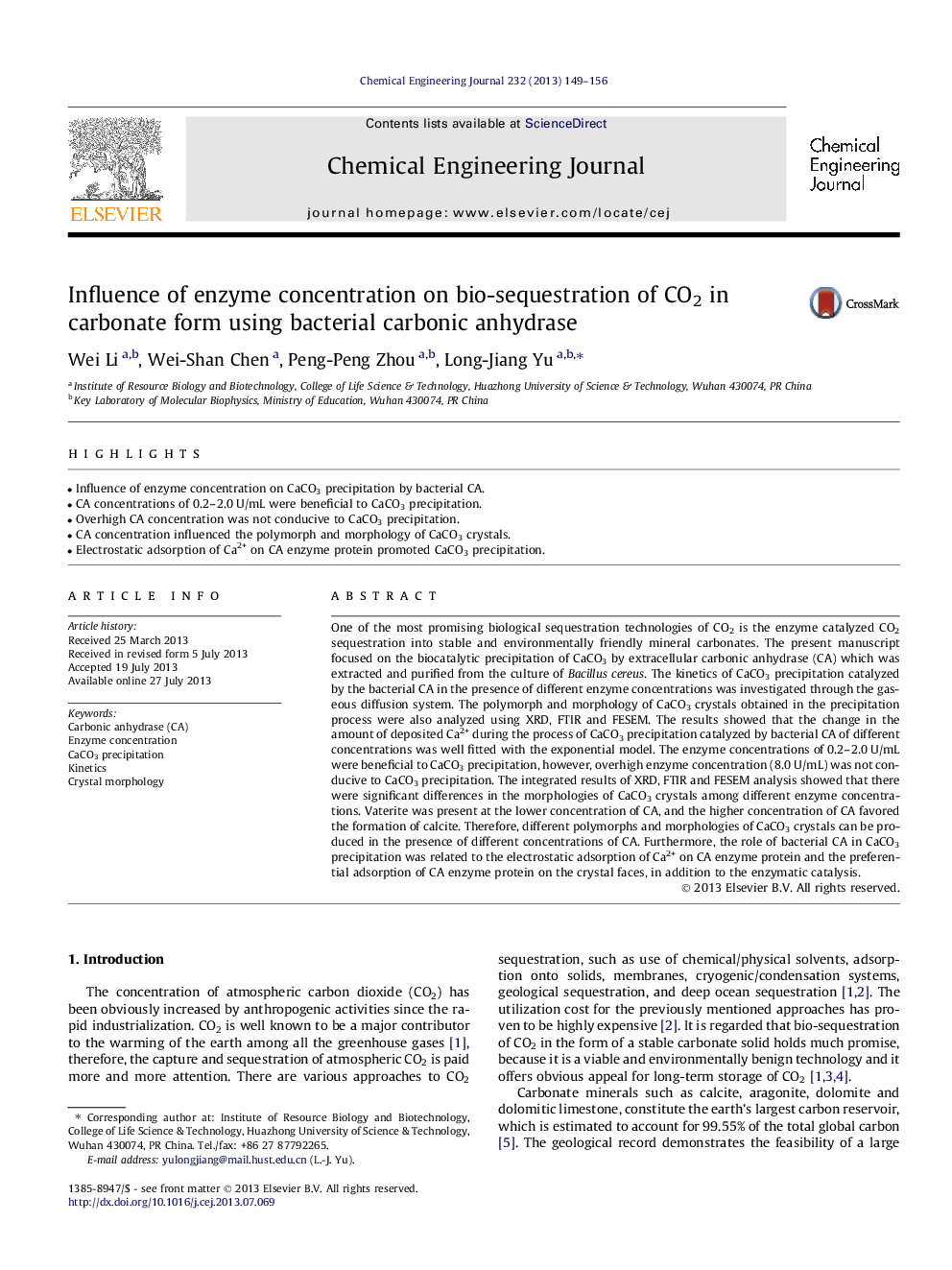| Article ID | Journal | Published Year | Pages | File Type |
|---|---|---|---|---|
| 148133 | Chemical Engineering Journal | 2013 | 8 Pages |
•Influence of enzyme concentration on CaCO3 precipitation by bacterial CA.•CA concentrations of 0.2–2.0 U/mL were beneficial to CaCO3 precipitation.•Overhigh CA concentration was not conducive to CaCO3 precipitation.•CA concentration influenced the polymorph and morphology of CaCO3 crystals.•Electrostatic adsorption of Ca2+ on CA enzyme protein promoted CaCO3 precipitation.
One of the most promising biological sequestration technologies of CO2 is the enzyme catalyzed CO2 sequestration into stable and environmentally friendly mineral carbonates. The present manuscript focused on the biocatalytic precipitation of CaCO3 by extracellular carbonic anhydrase (CA) which was extracted and purified from the culture of Bacillus cereus. The kinetics of CaCO3 precipitation catalyzed by the bacterial CA in the presence of different enzyme concentrations was investigated through the gaseous diffusion system. The polymorph and morphology of CaCO3 crystals obtained in the precipitation process were also analyzed using XRD, FTIR and FESEM. The results showed that the change in the amount of deposited Ca2+ during the process of CaCO3 precipitation catalyzed by bacterial CA of different concentrations was well fitted with the exponential model. The enzyme concentrations of 0.2–2.0 U/mL were beneficial to CaCO3 precipitation, however, overhigh enzyme concentration (8.0 U/mL) was not conducive to CaCO3 precipitation. The integrated results of XRD, FTIR and FESEM analysis showed that there were significant differences in the morphologies of CaCO3 crystals among different enzyme concentrations. Vaterite was present at the lower concentration of CA, and the higher concentration of CA favored the formation of calcite. Therefore, different polymorphs and morphologies of CaCO3 crystals can be produced in the presence of different concentrations of CA. Furthermore, the role of bacterial CA in CaCO3 precipitation was related to the electrostatic adsorption of Ca2+ on CA enzyme protein and the preferential adsorption of CA enzyme protein on the crystal faces, in addition to the enzymatic catalysis.
